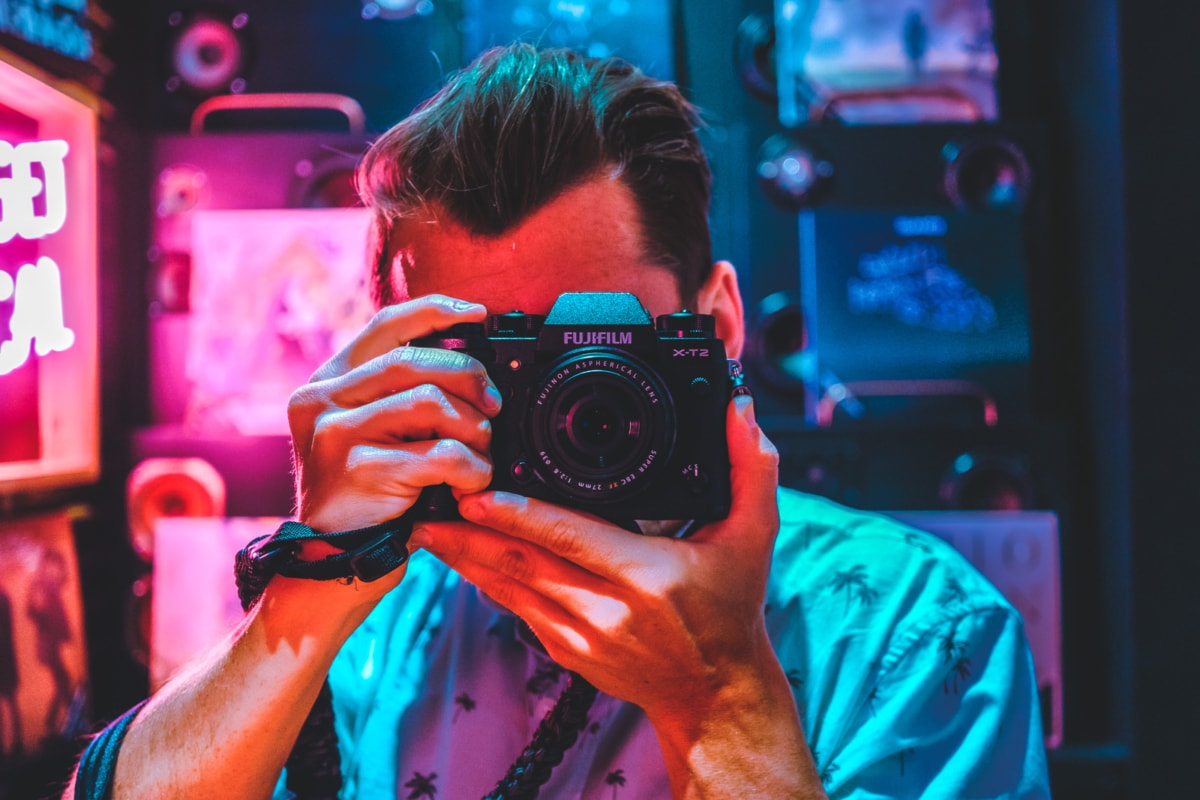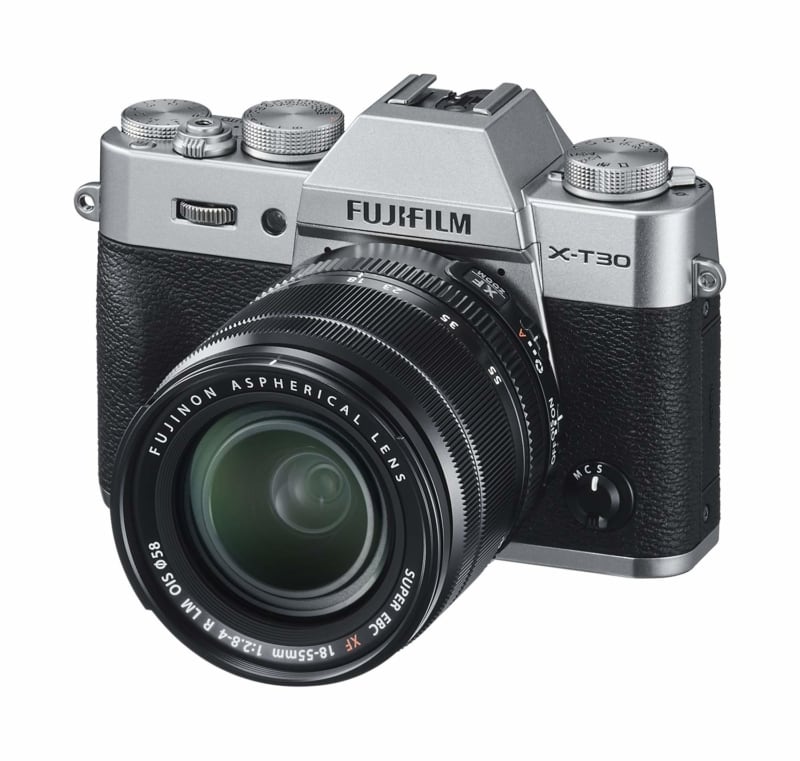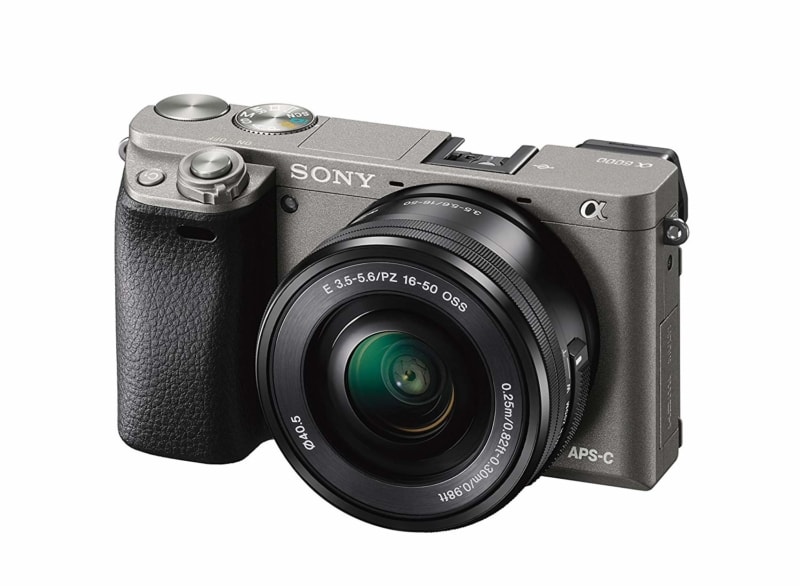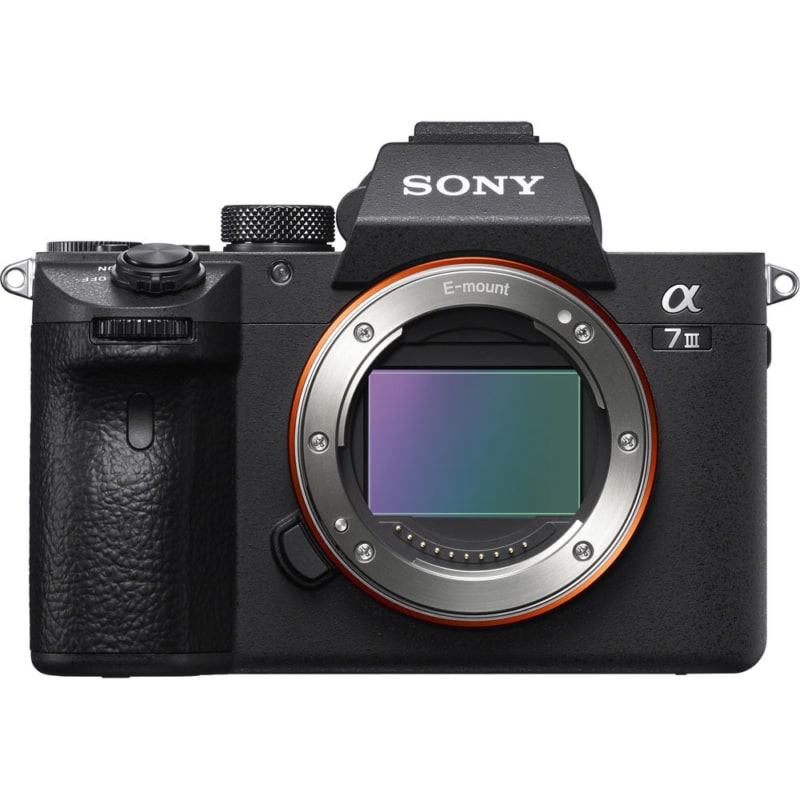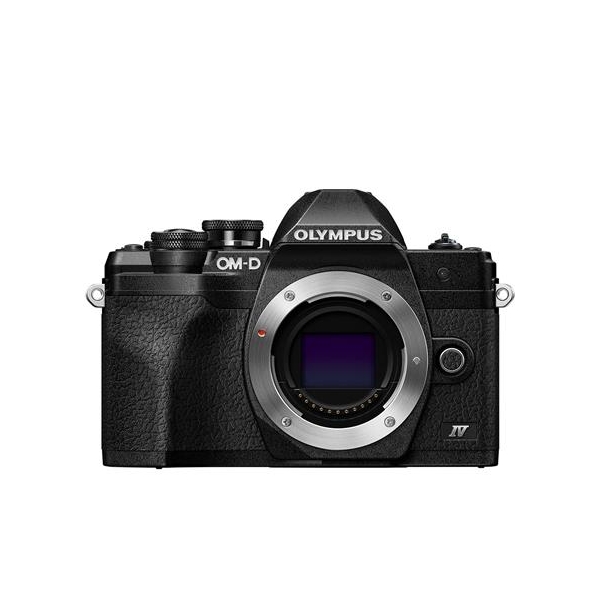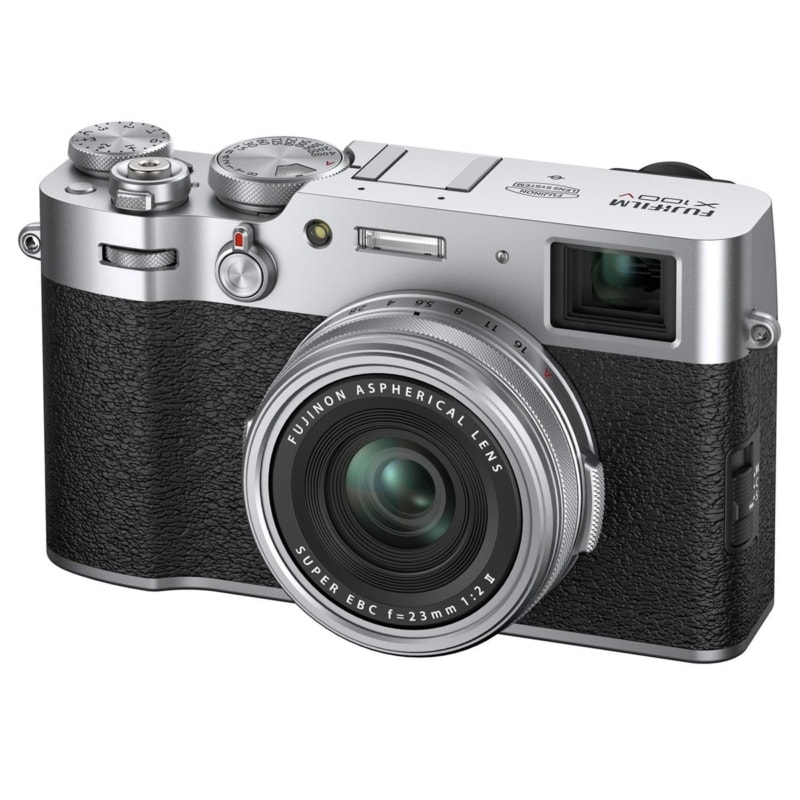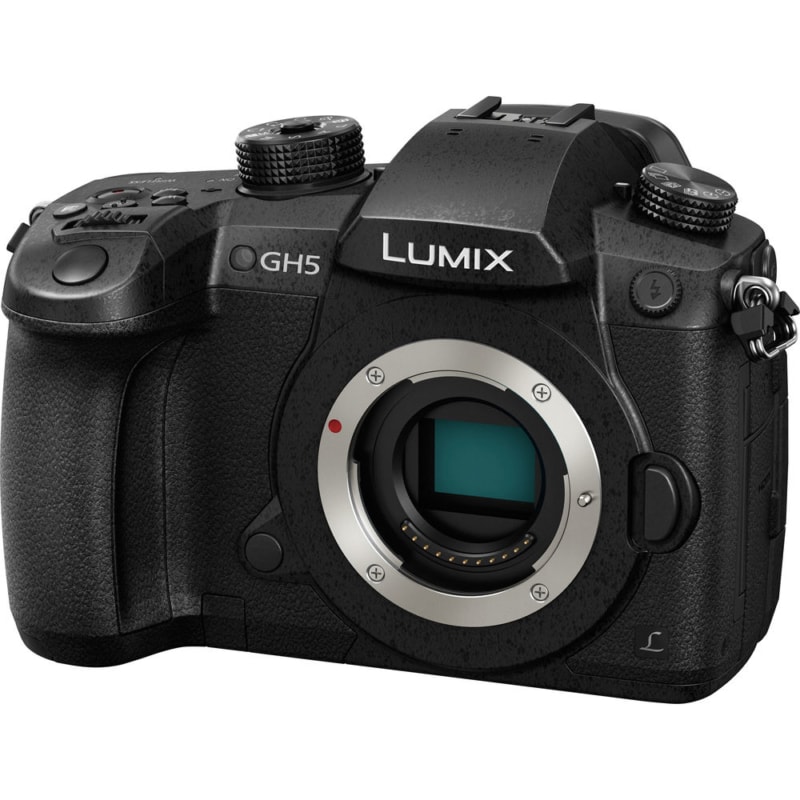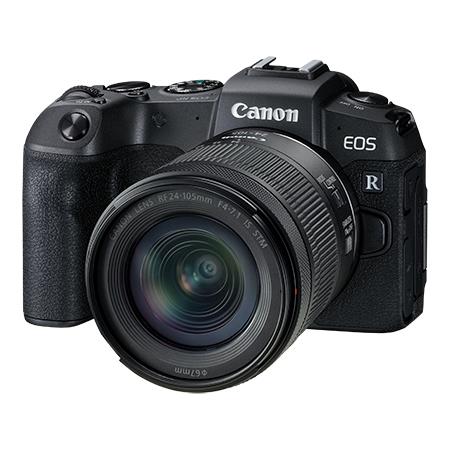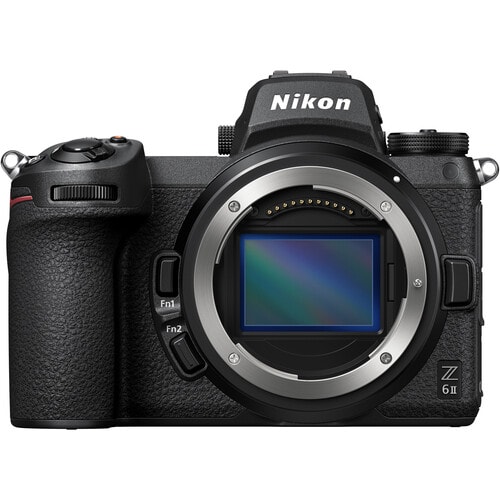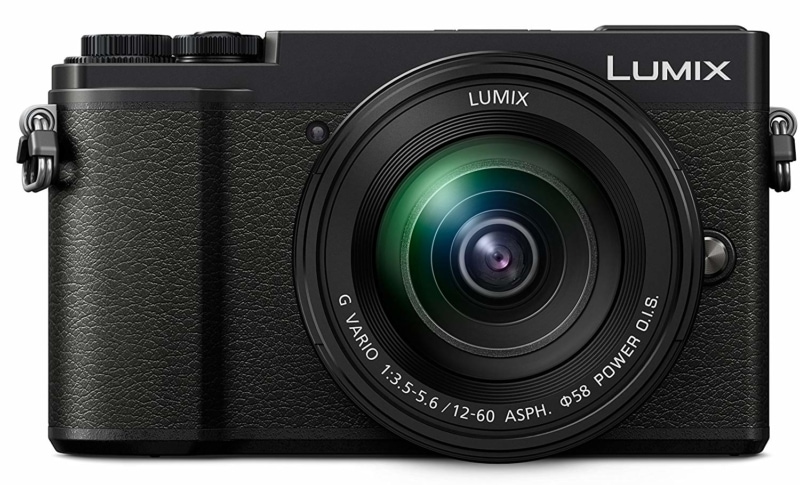Are you tired of carrying around a bulky camera on every trip? Upgrade the way you take photos by switching to one of the best mirrorless cameras for travel!
10 Best Mirrorless Cameras for Travel in 2024
Nowadays, you don’t have to sacrifice image quality for convenience. Mirrorless cameras are fully capable of delivering consistent results, making them a great option for street photography, landscape photographers, and action shooters.
Mirrorless cameras have become the new gold standard in digital photography, and especially in travel photography. Whether you’re a pro photographer, a budding amateur, or someone who’s hoping to capture all the best moments on your next trip, a mirrorless travel camera is now the obvious choice for anyone looking to purchase a new camera.
With more advanced features, state-of-the-art new technologies, and more compact dimensions, mirrorless cameras are becoming the premier choice for travel photographers all over the world. DSLR cameras have gone the way of the dinosaurs.
But with that said, choosing the best mirrorless camera for travel is no easy task. There are so many things to consider, like the feature set, ease of use, lens options, and most importantly—price.
Plus, ‘best’ is subjective, especially when it comes to reviews on the Internet. There is no right answer. There is only a right answer for you. So, if you’re looking for your best mirrorless cameras for travel photography, allow me to lend a hand.
Not every camera has the same features, so I’m going to take you through the ins and outs of the best mirrorless cameras for travel photography. I’ll also provide an in-depth look at the best mirrorless cameras as I give you product advice along the way. By the time we’re finished, you’ll have a better understanding of how each mirrorless camera works and which one will suit your travel needs.
If you don’t have the time to sift through this entire guide, I’ll give it to you straight. These are my top mirrorless travel camera picks based on performance, price, build quality and ergonomics:
-
Our Top Picks
- Overall Best Mirrorless Camera for Travel: Fujifilm X-T30
- The Best Mirrorless Camera for Travel If You're on a Budget: Sony a6000
- The Best Full-Frame Mirrorless Camera for Travel: Sony a7 III
- The Best Micro Four-Thirds Mirrorless Travel Camera: Olympus OM-D E-M10 Mark IV
- Best Compact Mirrorless Travel Camera: Fujifilm X100V
- Best Video Camera For Travel: Panasonic Lumix GH5 II
- Best Entry Level Mirrorless Travel Camera: Canon R100
- Best Mirrorless Canon Camera for Travel: Canon EOS RP
- Best Mirrorless Nikon Camera for Travel: Nikon Z6 ii
- Best Mirrorless Travel Camera for Minimalists: Panasonic LUMIX GX9
-
Fujifilm X-T30: Overall Best Mirrorless Camera for Travel

Fujifilm is at the top of my list with its “Little Giant X-T30,” giving us almost 100% frame coverage and 26.2 million pixels of incredible detail at a physical size that is so small, it’s simply perfect for travel.
The X-T30 is the lower-priced version of Fuji’s flagship X series model, the X-T3. It’s not weather-sealed, but all the features remain the same, which means you get incredible features and image quality at an amazing price point. That why this bad boy earns the top spot for my pick of the best cameras for travel, period.
The Fujifilm X-T30 has an APS-C sensor and stands toe-to-toe with some of the much more expensive professional cameras, and due to its compact size, it delivers the best size-to-feature ratio in this class.
In fact, the features themselves are on par with some cameras that cost twice the price!
While Fuji has since released the X-T4, it comes at a cost—both physically and financially. It’s larger and has a higher price point that would only be worth it to more professional shooters.
Fujifilm lenses are another selling point of this camera since they cost about 2/3 the price of their main competitor: Sony. If you’re looking to expand your lens kit, the Fujifilm X-mount lenses will go easy (ahem…easier) on your wallet.
Fujifilm is also well known for their incredible color replication. So, if you want vibrant travel photos and landscape shots straight out of the camera, Fujifilm is your man. It’s a great all-rounder camera for travel photography at an excellent price.
- Pros & Cons
- Technical Specs
- Lightweight and small
- Ergonomically designed
- Color replication and film simulation modes are all excellent
- Great price point, especially given the premium performance
- It's too small for some, especially if you have large hands.
- The handgrip isn't very deep which means it's difficult to grasp.
- Not weather resistant.
- Screen doesn't fully articulate.
Sensor Size 26.1-megapixel APS-C X-Trans CMOS 4 Viewfinder Type Electronic (EVF) ISO Sensitivity Auto; 160 to 12,800 (Extended: 80 to 51,200) Image Processor X-Processor 4 with Quad CPU Continuous Shooting Up to 18 FPS Autofocus Points Phase Detection: 425 Video Resolution DCI and UHD 4K Video at 30fps Screen 3" tilting flip screen Stabilization Optical image stabilization (OIS) -
Sony a6000: The Best Mirrorless Camera for Travel If You're on a Budget

Sony comes in second with its hybrid digital mirrorless camera: the a6000. Sony is a popular manufacturer of compact cameras, and their line of mirrorless cameras is becoming the new standard for professional photographers.
This model in particular has stood the test of time as one of the best mirrorless cameras for travel, and it’s the world’s best-selling mirrorless camera for a reason. It offers you the full benefit of an entry level compact camera but with all the features of a higher-end model like the a7 III (which I’ll cover soon).
The Sony a6000 changed the game with its high-speed contrast-detection and custom manual camera settings.
It boasts the world’s fastest autofocus lens, with an 11 frames per second burst mode that are perfect for stills and 4k video shoots.
The Sony a6000 comes standard with a 16-50mm f/3.5-5.6 lens. If you’re interested in shooting landscapes, the wide angle of the 16mm is exactly what you need. And if you’re more interested in shooting portraits and people, 50mm is the perfect focal length, providing the least amount of distortion.
Sony lenses are known to be expensive, though, so keep that in mind if you plan to expand your set of glass. Mind you, some third-party manufacturers like Tamron and Sigma are making much less expensive glass at much more affordable prices.
The two feature that makes the Sony a6100 a great mirrorless camera for travel are most notably the Autofocus (AF) system and the tilting LCD screen.
Being able to capture all the action, no matter how fast, is an important piece of functionality to have in a camera, especially if you’re shooting street photography. The Sony a6000 has 179 phase detect AF points covering 92% of the frame—in layman’s terms, the autofocus is really good at tracking moving subjects across almost the entire frame
As for the tilting LCD screen, not only does this allow you to capture some unique and creative angles on your shots, it also means it’s much easier to compose and shoot selfies…and let’s face it, we all love shooting selfies!
The most surprising thing about this mirrorless camera is the affordable price tag. It’s nearly impossible to find this kind of quality to price ratio anywhere else. In my opinion, it’s a great value option for any enthusiast who wants to break into travel photography without breaking the bank.
- Pros & Cons
- Technical Specs
- Excellent in low light with its long aperture range
- Smart remote for wireless control
- Intuitive buttons for ease of use
- Battery power drains fast if not on airplane mode
- No optical or in-body image stabilization
- No 4k UHD video
- No touch screen features
Sensor Size 24.3-megapixel APS-C sensor Viewfinder Type OLED electronic ISO Sensitivity Auto, 100 to 25,600 Image Processor BIONZ X Continuous Shooting 11 frames per second Autofocus Points 179 phase-detection points Video Resolution Full HD 1080P at 60P or 24P Screen 3" tilting LCD screen Stabilization None -
Sony a7 III: The Best Full-Frame Mirrorless Camera for Travel

The Sony a7 III is one of the best full-frame cameras out there, period, especially at this price point. The Sony a7 III meets you half-way between affordability and premium functionality, which, if you ask me, is everything the average travel photographer should be looking for.
Among the Sony a7 series of full-frame cameras, this is the most balanced choice by far. It doesn’t have the same megapixel capability as the Sony Alpha a7R III (42MP) or the Sony Alpha a7R IV (60MP), but you don’t need anything that high-res unless you’re printing large posters or billboards.
With a 24 megapixel full-frame sensor and in-body image stabilization the Sony a7 III is everything you need for digital images and small prints, should you choose to go that route.
This is the camera I personally use and I couldn’t be happier. If you want a travel camera that provides a truly professional experience at an affordable price point, then this the a7 III from Sony is a no-brainer.
- Pros & Cons
- Technical Specs
- Longest battery life compared to other Sony models
- Comfortable, rigid grind handle
- Interchangeable and supports heavy lenses
- Weather-sealed
- Has two slots but only one SD slot for UHS-II high-speed shooting
- Sometimes the start-up lags
- Really confusing menu system!
Sensor Size Full-frame 24.2 MP Exmor R CMOS sensor Viewfinder 0.5" UXGA OLED True electronic viewfinder ISO Sensitivity 50 to 204,800 Image Processor BIONZ X Continuous Shooting 10 frames per second Autofocus Points Fast Hybrid AF with 693 phase-detection and 425 contrast-detection AF points Video Resolution 4k video Screen 922K-dot LCD touch flip screen Stabilization Sensor-Shift, 5-Axis in-body image stabilization -
Olympus OM-D E-M10 Mark IV: The Best Micro Four-Thirds Mirrorless Travel Camera

The Olympus OM-D E-M10 line has come a long way over the years, and carries an impressive set of features including 4k video and incredible in-body image stabilization. The Mark IV is no exception.
The OM-D E-M10 Mark IV is a micro four-thirds Olympus camera with a sturdy housing that’s built to last and a comfortable shape that fits nicely in your hands.
The thing that impressed me most about this Olympus was the speed—both in the autofocus and in the operation in general.
Mirrorless cameras are known to be a little slouchy when it comes to autofocus (especially in low light), but the Olympus OM-D E-M10 Mark III proved to be lightning fast. Being able to use the touchscreen LCD to take photos just by tapping on the subject is a real game changer, and it makes taking incognito travel photos super easy.
The Olympus OM-D E-M10 Mark IV comes standard with a 14-42 f/3.5-5.6. Since the Olympus is a micro four-Thirds camera, the 14-42mm is actually equivalent to 28-84mm, which is great as an all-rounder lens. However, with an aperture range of f/3.5-5.6, you’ll be limited to using this lens during daylight, or at least with the flash at night.
- Pros & Cons
- Technical Specs
- Blur and shake-free shooting experience with noise control
- Ergonomic and compact design with long battery life
- Art effect filters with advanced photo mode
- Very cost effective!
- No microphone input
- RAW images and footage may not display thumbnails on your computer
- Only minor improvements compared to its predecessors
Sensor Size 20MP Live MOS Sensor Viewfinder Electronic OLED viewfinder, Approx. 2.36M dots ISO Sensitivity Auto, 200 to 25600 (Extended: 64 to 25600) Image Processor TruePic VIII Continuous Shooting 510fps high-speed sequential shooting with AF/AE Tracking Autofocus Points 121-point Contrast Detection AF Video Resolution UHD 4k video at 24fps Screen 3" tilting touchscreen LCD monitor Stabilization Built-in 5-axis sensor-shift IS for still photos & video -
Fujifilm X100V: Best Compact Mirrorless Travel Camera

The Fujifilm X100V is easily the best mirrorless camera in compact form. But don’t let its small size fool you—this is a feature-packed camera with a price tag to match.
My favorite thing about Fujifilm is the ergonomics and ease of use. If you’re looking for a travel camera without the fuss, this camera gets the job done without any of the stress.
One major advantage of owning this is how user-friendly it is, and it provides amazing stability for any situation. Plus, this fits in your pocket without compromising on flexibility and image quality.
This means pro-level photos, literally in your pocket.
This model puts its heavier counterparts to shame with its amazing shooting capabilities and it’s definitely the best compact mirrorless camera out there. This is great option for an entry level travel photographer who still wants to take high quality travel photos.
- Pros & Cons
- Technical Specs
- Fast autofocus
- Beautiful design, simple to use
- Built in ND filter option
- No stabilization whatsoever
- Battery drains too fast
- Autofocus suffers in low light
- Not weather-sealed
Sensor Size 26.1MP X-Trans CMOS 4 sensor (APS-C format) Viewfinder Type Hybrid 0.52x OVF with 3.69m-Dot OLED EVF ISO Sensitivity 160 to 12800 (Extended: 80 to 51200) Image Processor X-Processor 4 Continuous Shooting Up to 30 fps at 20.9 MP with electronic shutter Autofocus Points 425-Point Hybrid AF System Video Resolution 4K Video Recording at 30 fps Screen 3.0" 1.62m-Dot Tilting Touchscreen Stabilization None -
Panasonic Lumix GH5 II: Best Video Camera For Travel

If you want to level up your travel videography skills, the Panasonic Lumix GH5 II is your best bet! One of its most-loved features is its powerful in-body stabilization so you can shoot by hand without having to use a rig or tripod.
Packed with lots of customizable options, the GH5 II has become a favorite among aspiring music video producers and travel videographers. It comes at a more affordable price compared to similar models, but it trumps its rivals easily with its smooth, high-speed and hi-res shooting capabilities.
One of the most impressive features, and the reason it’s so well-loved, is its ability to shoot 180 fps at Full HD. The GH5S, its successor, can shoot up to 240 fps, but I still find the GH5 to be a superior model overall, whereas the GH5S is useful in more specialized scenarios.
The GH5 II also offers unlimited video recording, whereas many other cameras limit the length of recording time to 10 or 30 min. Plus, you get a fully articulating screen, which is a must have for run-and-gun video, and which is a rarity for most other mirrorless cameras.
- Pros & Cons
- Technical Specs
- Ability to shoot 180 fps at Full HD
- Splash and freeze build with weather-sealed magnesium alloy body
- Reduced blurring and beautiful, vibrant colors
- Has some difficulty with auto focus since it doesn’t use phase detection
- Menus can be confusing unless you rearrange them with customization
- Display button location takes time getting used to
Sensor Size 20.3-megapixel micro four-thirds sensor Viewfinder OLED viewfinder ISO Sensitivity Auto, 160 to 25,600 (Extended: 100 to 25,600) Image Processor Venus engine Continuous Shooting Up to 60 frames per second Autofocus Points Contrast detection: 225 Video Resolution 4K video at 2160P Screen Free-Angle Tilting Touchscreen LC Stabilization 5 axis dual I.S. 2.0 in-body image stabilization -
Canon R100: Best Entry Level Mirrorless Travel Camera
Make no mistake—the EOS R100 from Canon is a wolf in sheep’s clothing. With an APS-C sensor, it’s the size of most compact travel cameras, and it packs impressive performance for its price. If you’re just starting out, this camera is capable enough for you to develop your photography skills without becoming frustrated.
This is one of those travel cameras that’s versatile enough to take high quality images but also fit into your back pocket—especially when coupled with the 27mm pancake lens—a 40mm equivalent.
It might seem less professional in contrast with other players on the market, but it’s a killer bargain for something that gives you these kind of photo and video features in this price range.
- Pros & Cons
- Technical Specs
- Interchangeable lens mount that supports heavy lenses with a long zoom range
- No in-body image stabilization
- Lens is weather-sealed, but the body is not.
Sensor Size 24.1 MP APS-C CMOS sensor (compatible with Dual Pixel CMOS AF) Viewfinder OLED color electronic viewfinder; 0.39", approx. 2.36 million dots ISO Sensitivity 160 to 12800 (Extended: 80 to 25600) Image Processor DIGIC 8 Continuous Shooting Up to 6.5 fps Autofocus Points 425-Point Hybrid AF System Video Resolution 4K video (4096 x 2160) at up to 30 fps Screen TFT color, liquid-crystal monitor Stabilization 4 stops correction with In-lens Optical Image StabilizationNone -
Canon EOS RP: Best Mirrorless Canon Camera for Travel

The two companies who dominated the DSLR market have, unfortunately, lagged very far behind in their entry into the mirrorless market. Canon, the most popular camera brand of all time, was quickly outpaced by Sony due to their quick adoption and innovation.
Most travel photographers pick a brand they like and stick with it. Travel photographers are very dedicated to their camera brand of choice. So if you’re a dedicated Canon shooter and insist on shooting Canon, there’s only one real option: the Canon EOS RP.
Canon’s original mirrorless release—the Canon EOS R—was lackluster at best. But the Canon EOS RP meets at the intersection of functionality, quality and price for most photographers, making it one of the best travel cameras by Canon.
Featuring a full-frame 26.2 MP CMOS sensor, and shooting UHD 4k video, the Canon EOS RP ticks all the boxes for most travel scenarios. And perhaps the most thrilling feature of this camera is the fully articulating flip screen with digital 5-axis stabilization, a combo that’s well-suited to shooting travel videos.
In my opinion, it’s not Canon’s best piece of work, but it’s still worthy of a spot on this list. Canon does have some of the best glass around, though, and wide angle lenses are perfect for travel photography, so check out this article if you’re looking for a wide angle lens for Canon.
- Pros & Cons
- Technical Specs
- Fully-articulating screen
- Relatively small size
- L series level weather-sealed and dust-sealed
- Compatible with EF lenses via an adaptor
- Wi-Fi and Bluetooth Connectivity
- AF isn't very fast or accurate
- Battery life isn't great
- Poor dynamic range in RAW images
Sensor Size 26.2MP full-frame CMOS sensor Viewfinder 2.36m-Dot Electronic OLED Viewfinder ISO Sensitivity 100 to 40000 (Extended: 50 to 102400) Image Processor DIGIC 8 Continuous Shooting Up to 5 fps at 26.2 MP for up to 50 Frames (Raw) / Unlimited Frames (JPEG) Autofocus Points Dual Pixel CMOS AF, 4779 AF Points Video Resolution UHD 4K video and Full HD 1080 Video Screen 3" 1.04m-Dot Vari-Angle Touchscreen LCD Stabilization Digital, 5-Axis (Video Only) -
Nikon Z6 ii: Best Mirrorless Nikon Camera for Travel

The Nikon Z6 ii—the latest full-frame release from Nikon—is making headlines with fantastic all-around performance. It offers a higher shooting speed, faster processing, and greater versatility in all arenas.
The second generation of the Nikon Z line guarantees both high quality images and video with its 24.5MP BSI CMOS sensor and dual EXPEED 6 image processors.
And for backwards compatibility with their glass, the Nikon Z6 ii is being bundled with an FTZ adaptor kit for use with Nikon F-mount SLR lenses.
On top of the internal refresh, it’s also updated with a dual memory card slot, a tilting touchscreen and Wi-Fi capabilities. This is not an entry-level camera—it’s professional grade. Make no mistake!
The future is looking bright for Nikon mirrorless cameras.
- Pros & Cons
- Technical Specs
- Dual memory card slots: one CFexpress Type B and one SD UHS-II
- 4K video at 30p is possible, or up to FHD 120p for slow-motion output. Future firmware update will add UHD 4K video at 60p.
- Native 900-second long exposure!
- Excellent dynamic range.
- Wi-Fi and Bluetooth Connectivity
- Pricey for the average consumer especially once you add a lens.
- Weather-resistant, not weather-sealed.
Sensor Size 24.5MP Full-Frame FX-Format BSI CMOS Sensor Viewfinder 3.6m-Dot OLED Electronic Viewfinder ISO Sensitivity 100 to 51200 (Extended: 50 to 204800) Image Processor Dual EXPEED 6 Image Processors Continuous Shooting 14 fps Autofocus Points 273-Point Phase-Detect AF System Video Resolution UHD 4K Video at 30fps; N-Log & 10-Bit HDMI Out Screen 3.2" 2.1m-Dot Tilting Touchscreen LCD Stabilization 5-Axis In-Body Vibration Reduction -
Panasonic LUMIX GX9: Best Mirrorless Travel Camera for Minimalists

Last, but not least, we have none other than the Panasonic LUMIX GX9! Its sleek design is complemented with a simple yet intuitive interface that allows you to work it like an expert with a few touches.
Panasonic cameras have been around for a long time, and though they’ve never acquired any significant market share, the Panasonic LUMIX line has made a name for itself.
This little shooter comes with a micro four-thirds sensor and is everything newer travel photographers should need. The 12-60mm kit lens is equivalent to 24-120mm and, with this kind of zoom range, you’ll be well served in most shooting situations. The f/3.5-5.6 means this camera will give you the best results during the daytime and won’t be well-suited for night shots.
Not to be confused with the heavier versions of this series like the Panasonic Lumix G9 and Panasonic Lumix S1, this minimalist camera is best for shooting photos or videos in and out of town.
- Pros & Cons
- Technical Specs
- Dust reduction system
- Excellent color reproduction
- Built-In Bluetooth LE and Wi-Fi
- Small size, which could be a pro or a con
- Slow autofocus
Sensor Size 20.3MP Digital Live MOS Micro Four Thirds Sensor Viewfinder Tilting 2.76m-Dot 0.7x EVF ISO Sensitivity 200 to 25600 (Extended: 100 to 25600) Image Processor Venus Engine Image Processor Continuous Shooting Up to 9 fps Autofocus Points Contrast Detection: 49 points Video Resolution 4K UHD 30p and 24p Video Recording Screen 3.0" 1.24m-Dot Tilting Touchscreen LCD Stabilization 5-Axis Dual I.S.2 Image Stabilization
What To Look for in a Mirrorless Travel Camera
The mirrorless camera market has a wide selection of cameras ranging from entry-level to professional—depending on your photography skills, you might need different specifications for your camera.
If you aren’t sure where to start, look no further! Here are some considerations for you to remember when looking at products online or at a store:
- Camera Sensors & Sensor Size – Choose between a full-frame sensor, APS-C sensor, or a micro four-thirds. If your camera has a smaller sensor, it won’t perform as well in low light conditions. This is one advantage to full-frame cameras.
- Camera Stabilization – Taking a shaky or blurry photo is a no-no—thankfully, mirrorless cameras usually come with either in-body image stabilization or optical image stabilization. IBIS usually performs better, but that typically only matters for pros.
- Autofocus System – You don’t always want to manually snap away when you’re multitasking! Older models used to have shaky focus points features that would defocus randomly, but new releases have improved this issue.
- Frames Per Second (FPS) – Continuous shooting is a must for travel photography, so the shutter speed is a crucial part of capturing a great image. The FPS burst rate is a good indicator of the camera’s processing engine, but unless you need high-speed shooting for sports, you can stick with lower frame rates for stills.
- Video Recording Capability – Most travel photographs double as vloggers on social media, so having video capability is an important tool to have in your travel cameras! Look for cameras with 4k video capabilities to get the most out of video shooting.
- Camera Body & Size – Form factor plays a huge role in choosing a good mirrorless camera. While some people want a more robust build that feels like a DSLR, others prefer a small handheld device for easier grip. It’s all a matter of preference!
- Megapixels (MP) – This tells you how many pixels go into each photo and how large your resolution can be when printing your photos. For the average traveler, a minimum of 12 megapixels is more than enough. 20+ megapixels is enough to print a poster. Beyond that is unnecessary unless you really need it for a specific reason.
- Weather Resistance – Having weatherproofing for your mirrorless camera is essential to protect it from damage, especially if you’re going to use it outdoors for landscape photography.
- Lens Options – While some brands provide a kit lens, you also have the option to hook up existing DSLR lenses to your camera using an adaptor from different manufacturers.
- Battery Capacity – Nothing is more important than battery life! Having to recharge constantly can be annoying, and older models weren’t as efficient. The latest models have resolved this with better batteries.
- Special Features: Touchscreen, voice commands, Bluetooth, and WiFi capabilities are definitely a plus. The more features, the merrier!
- Insurance: Warranty is an important part of making a purchase, so pick a camera that offers customer service and repairs for you as a consumer.
Why Go Mirrorless for a Travel Camera?
Instead of using an optical viewfinder, the mirrorless camera uses a large image sensor to transmit the light into the electronic viewfinder and onto the screen. The new sensor technology meant there was no need to use a flipping mirror mechanism that takes up space inside the body.
Thanks to modern-day innovation, we can enjoy more sights and sounds instead of fussing over equipment that weighs us down!
The Benefits of a Mirrorless Camera for Travel Photography
There are lots of benefits to owning a mirrorless camera, and the best part is you don’t have to be a professional photographer to use it! Mirrorless lenses are used in point and shoot cameras, smartphone cameras, and even action cameras.
However, mirrorless cameras takes things to the next level by producing quality images that rival those of high-end DSLR cameras. Imagine getting all the perks of a portable camera without having to compromise on image quality!
Mirrorless cameras have interchangeable lenses, are lightweight and provide added versatility for travel photographers, videographers, and enthusiasts. The advantages combine functionality, ease of use, and continuous shooting with minimal effort on your end.
The best part? The shutters can totally silent, making it easier for you to observe without being intrusive. However, mirrorless cameras do have their disadvantages, such as cost, decreased battery life and handling.
Types of Sensors for Travel Photography
The sensor size in your camera will affect the image quality and pixel count. It also dictates its ability to take good photos in low light conditions. A camera sensor works hand-in-hand with image processors to create the image data through dots in pixels.
Still confused? The differences between sensor terms can be confusing, so here’s a crash course on the kinds of sensors you’ll find in mirrorless cameras:
- Micro Four Thirds Sensor – The micro four thirds (MFT) system sensors are the smallest sensors with a sensor size of 17mm x 13.5mm, allowing users to shoot in the 4:3 aspect ratio. Olympus and Panasonic developed the micro four-thirds sensor for most of their mirrorless cameras.
- APS-C Sensor (CMOS or MOS) – This is a smaller sensor size for beginner-friendly and mid-range models, with most camera brands producing this to suit beginner-friendly budgets. The size dimensions are generally 24mm x 16mm and you can typically find them in Sony, Fuji, and Canon models.
- Full-Frame Sensor – This is the largest sensor size available for full-frame mirrorless cameras and it’s one of the best for taking 4k video or large format images. It’s more expensive than most since it measures 36mm x 24mm and can perform extremely well in all lighting conditions!
Mirrorless Cameras vs. SLR vs. DSLR Cameras
The precursor to the well-known DSLR is the SLR, which stands for ‘Single Lens Reflex’ and it has the same internal mechanism used by old school film cameras. The mirror mechanism reflects the image up into the viewfinder (so you can see it), and when you click the shutter, it moves the mirror out the way very quickly so that light can pass via the lens to the camera sensor.
While this worked like a charm for decades, technological advancements made way for electronics to take their place. As we developed into the digital age, newer technology gave us DSLR cameras or the ‘Digital Single Lens Reflex’ which allowed us to start writing images onto memory cards instead of film.
While the format has changed, the cameras pretty much used the same technology to flip the mirror with each shutter click.
You can see why, after all these years of using the same camera technology, it’s time to move on to the next generation.
Mirrorless Camera vs. Compact Camera
If you don’t think you’ve ever used a mirrorless camera before, it might surprise you that you’ve got one within hand’s reach—your smartphone uses the same mirrorless technology minus the high-resolution quality.
- Smartphones – While smartphones are great for snapping a quick pic for the ‘Gram, it doesn’t produce the same flawless look that we all know and love. That’s because your phone has a much smaller sensor than any “real” camera out there. And while it wins in portability, it’s still a far cry from being an ideal travel camera.
- Point-and-Shoot – The point-and-shoot (compact) camera has been around for decades, and they offer great value for most consumers. They’re ideal for people who want to start learning about the basics of photography without all the complicated controls. The collapsing lens makes them easy to stash in your pocket, but your depth of field won’t be that impressive. You won’t achieve any of those wondrous bokeh shots (blurry background), but they’re easy to use—hence the name.
- Action Cameras – The action camera (like a GoPro) is another competitor for photographers who want to capture fast-moving images or POV shots. Action cameras have risen in popularity for outdoor vlogging and sports coverage, but they aren’t ideal for taking photos and videos with your family and friends. While the GoPro is a crowd favorite for its easy to use features and sturdy build, there are restrictions in the photo modes—not to mention, they’re terrible for selfies!
Ready to Make The Mirrorless Switch?
Anyone can be a travel photographer with the right gear! You’ll enjoy making new memories and compiling all the highlights from your vacation with something that easily fits in your pockets. Just remember to pick the best camera that suits your lifestyle, budget, and photographic preferences.
Now that you’ve seen all the best mirrorless cameras for travel, you’re ready to see the world and your experiences through a better lens. The next time you’re packing for your upcoming adventures, I highly recommend taking your mirrorless camera along for the ride.
FAQ
-
What's a Mirrorless Camera?
Without getting too technical, a mirrorless camera is a camera that doesn’t use a mirror to record an image. In a mirrorless camera, there is no mirror (duh!), so a photo can be taken without any ‘obstruction’ between the viewer’s eye and the sensor.
The humble DSLR uses a mirror to reflect the image up into the viewfinder (so you can see it), and moves the mirror out the way very quickly so that light can pass via the lens to the camera sensor.
Since the mirror takes up a large amount of space within DSLR cameras, without it, a mirrorless camera can be much smaller in size.
That’s what makes mirrorless cameras so perfect for travel photography.
-
Are mirrorless cameras good for travel photography?
Yes, mirrorless cameras are perfect for travel photography.
-
What camera should I buy for travel photography?
A good mirrorless camera is the best choice for travel photography.
-
What is the major drawback of mirrorless camera?
The biggest drawback of mirrorless cameras is that they cost more than comparable DSLRs.
-
Why are photographers switching to mirrorless?
Mirrorless cameras are lighter, more compact, more durable, and easier to use.
